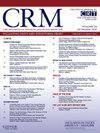Percutaneous coronary interventions for aneurysmatic right coronary artery in acute coronary syndrome: RIGHTMARE registry outcomes
IF 1.9
Q3 CARDIAC & CARDIOVASCULAR SYSTEMS
引用次数: 0
Abstract
Background
The optimal strategy during percutaneous coronary intervention (PCI) of aneurysmatic right coronary artery (ARCA) remains uncertain and has never been tested in the acute setting.
Objectives
To compare the in-hospital and long-term outcomes of immediate and staged PCI strategies for ARCA as culprit lesions during acute coronary syndrome (ACS).
Methods
Among 102.376 PCIs performed in 18 European centers, a total of 85 patients presenting with acute coronary syndrome undergoing ARCA PCI were finally included in the analysis. PCI strategy (stenting performed during the immediate vs staged procedure) and pharmacological approach adopted were collected. The primary outcome was procedural success (technical success without in-hospital MACE).
Results
The primary outcome occurred in 48.2 % of cases, with no significant differences observed between the immediate and staged PCI groups (50.9 % vs 43.3 %, p = 0.504). Patients in the staged-PCI group had a significantly higher rate of intravenous anticoagulant use (83.3 % vs 48.1 %, p = 0.002), BARC type 3 and 5 bleedings (12.9 % vs 1.9 %, p = 0.037), and longer in-hospital stay (7.40 ± 5.11 vs 9.5 ± 5.25 days, p = 0.049). After multivariate analysis, no independent predictors for procedural success were found in either group. Target lesion failure occurred in 24.1 % of cases without differences between groups at a median follow-up of three years.
Conclusions
Among patients undergoing ARCA PCI in the setting of ACS, immediate or staged PCI were associated with similar in-hospital and long-term outcomes. However, staged PCI was associated with a higher risk of major bleeding events and longer length of stay compared to immediate PCI strategy.

急性冠状动脉综合征右冠状动脉动脉瘤的经皮冠状动脉介入治疗:RIGHTMARE 登记结果。
背景:动脉瘤右冠状动脉(ARCA)经皮冠状动脉介入治疗(PCI动脉瘤性右冠状动脉(ARCA)经皮冠状动脉介入治疗(PCI)的最佳策略仍不确定,且从未在急性病例中进行过测试:目的:比较急性冠状动脉综合征(ACS)期间作为罪魁祸首的ARCA立即和分阶段PCI策略的院内和长期疗效:在欧洲18个中心进行的102376例PCI手术中,共有85例急性冠状动脉综合征患者接受了ARCA PCI治疗,最终纳入分析。分析收集了患者的 PCI 策略(即刻手术与分阶段手术中的支架植入)和采用的药物治疗方法。主要结果是手术成功率(技术成功且无院内MACE):结果:48.2%的病例获得了主要结果,立即PCI组和分期PCI组之间没有观察到显著差异(50.9% vs 43.3%,P = 0.504)。分期 PCI 组患者的静脉抗凝剂使用率(83.3% vs 48.1%,p = 0.002)、BARC 3 型和 5 型出血率(12.9% vs 1.9%,p = 0.037)和住院时间(7.40 ± 5.11 vs 9.5 ± 5.25 天,p = 0.049)均明显更高。经过多变量分析,两组患者均未发现手术成功的独立预测因素。靶病变失败发生率为24.1%,中位随访三年,两组间无差异:结论:在接受ARCA PCI治疗的ACS患者中,立即或分期PCI与相似的院内和长期预后相关。然而,与立即PCI策略相比,分期PCI与更高的大出血风险和更长的住院时间相关。
本文章由计算机程序翻译,如有差异,请以英文原文为准。
求助全文
约1分钟内获得全文
求助全文
来源期刊

Cardiovascular Revascularization Medicine
CARDIAC & CARDIOVASCULAR SYSTEMS-
CiteScore
3.30
自引率
5.90%
发文量
687
审稿时长
36 days
期刊介绍:
Cardiovascular Revascularization Medicine (CRM) is an international and multidisciplinary journal that publishes original laboratory and clinical investigations related to revascularization therapies in cardiovascular medicine. Cardiovascular Revascularization Medicine publishes articles related to preclinical work and molecular interventions, including angiogenesis, cell therapy, pharmacological interventions, restenosis management, and prevention, including experiments conducted in human subjects, in laboratory animals, and in vitro. Specific areas of interest include percutaneous angioplasty in coronary and peripheral arteries, intervention in structural heart disease, cardiovascular surgery, etc.
 求助内容:
求助内容: 应助结果提醒方式:
应助结果提醒方式:


